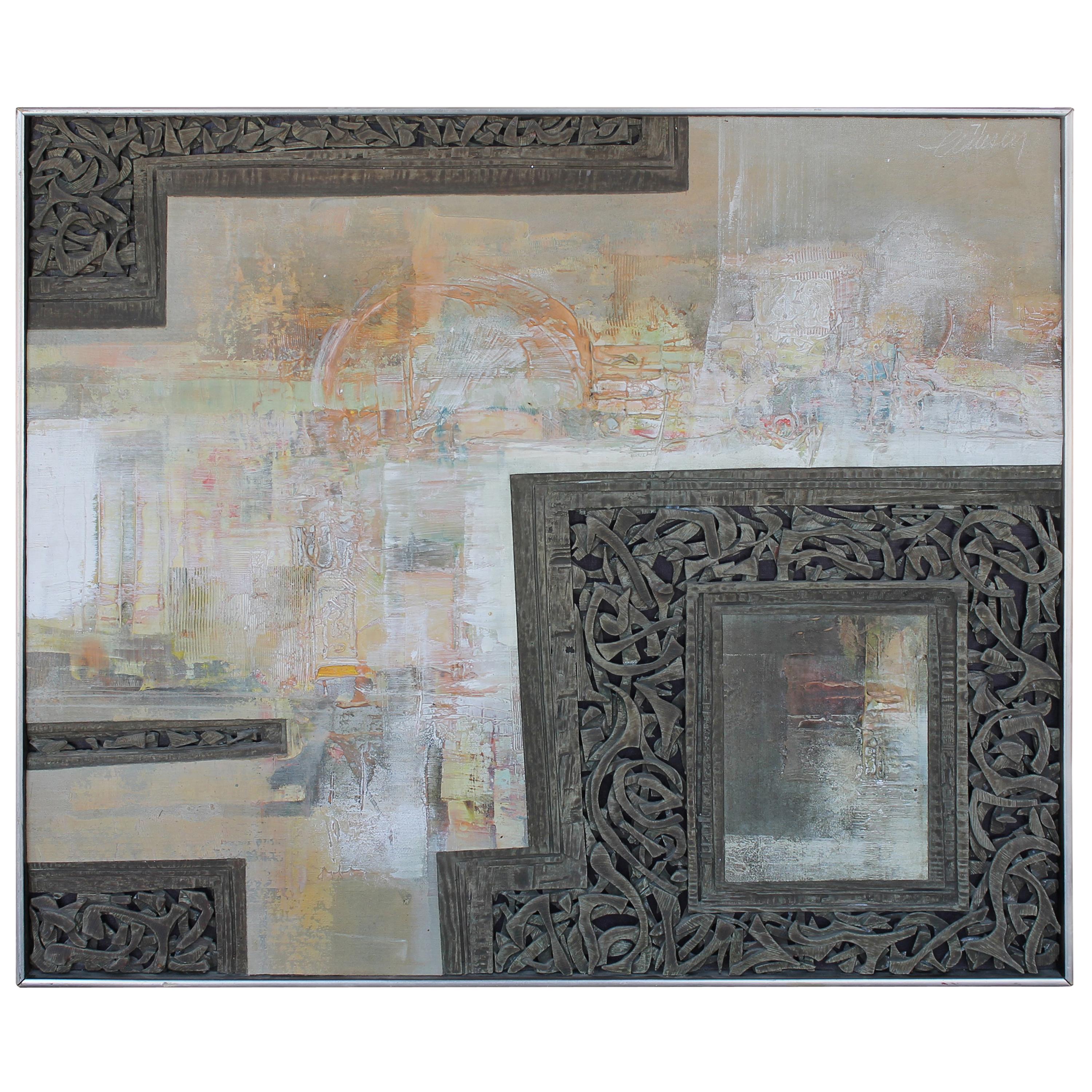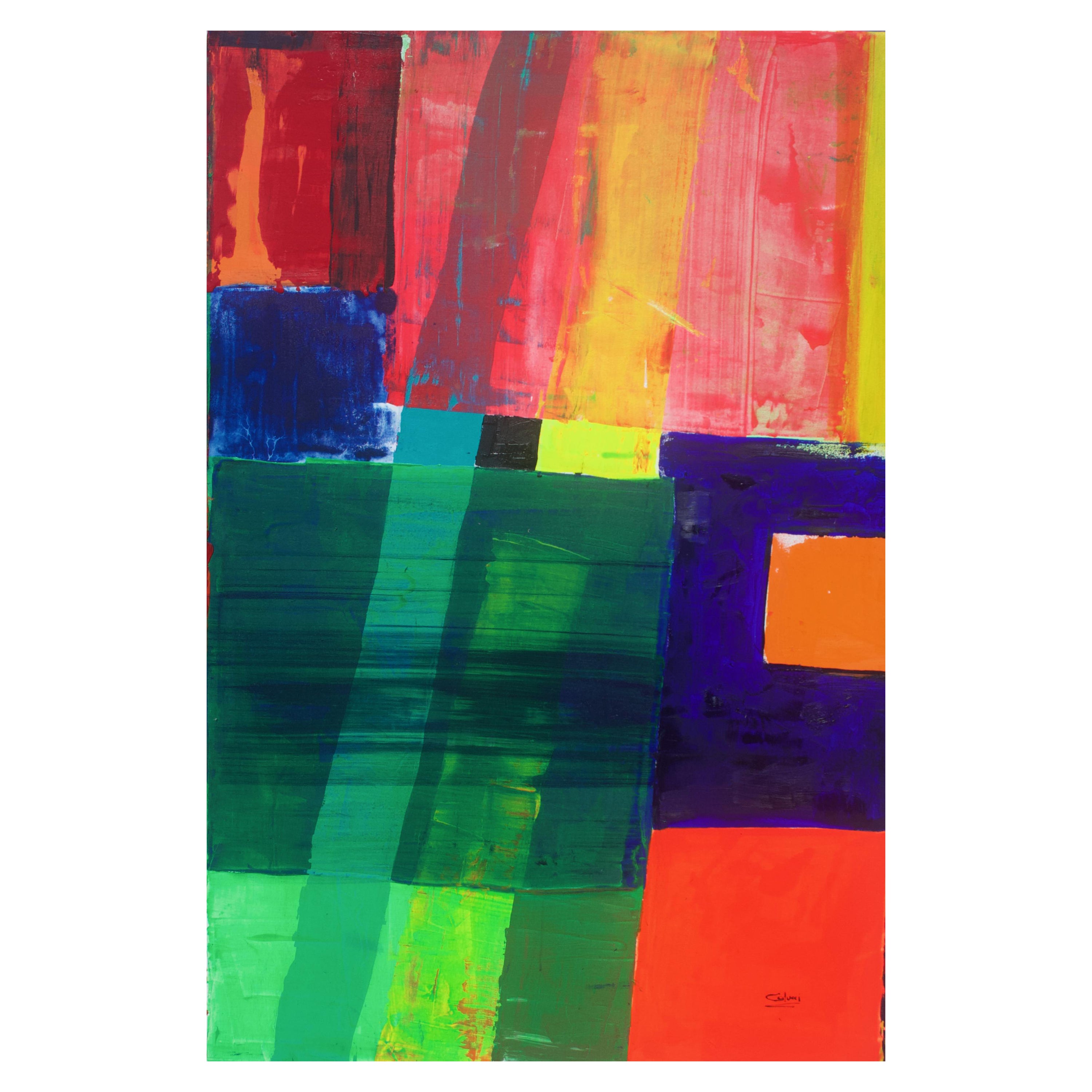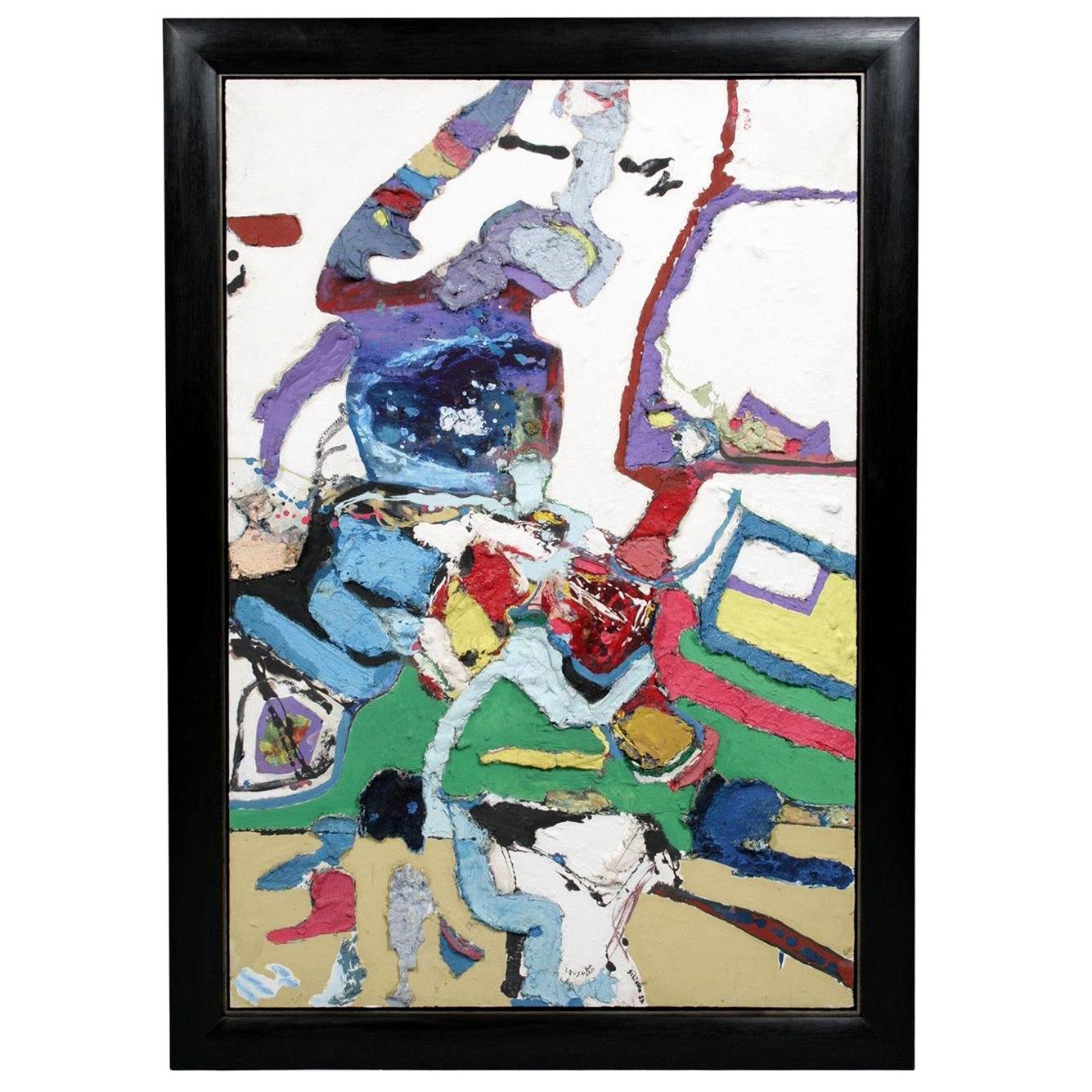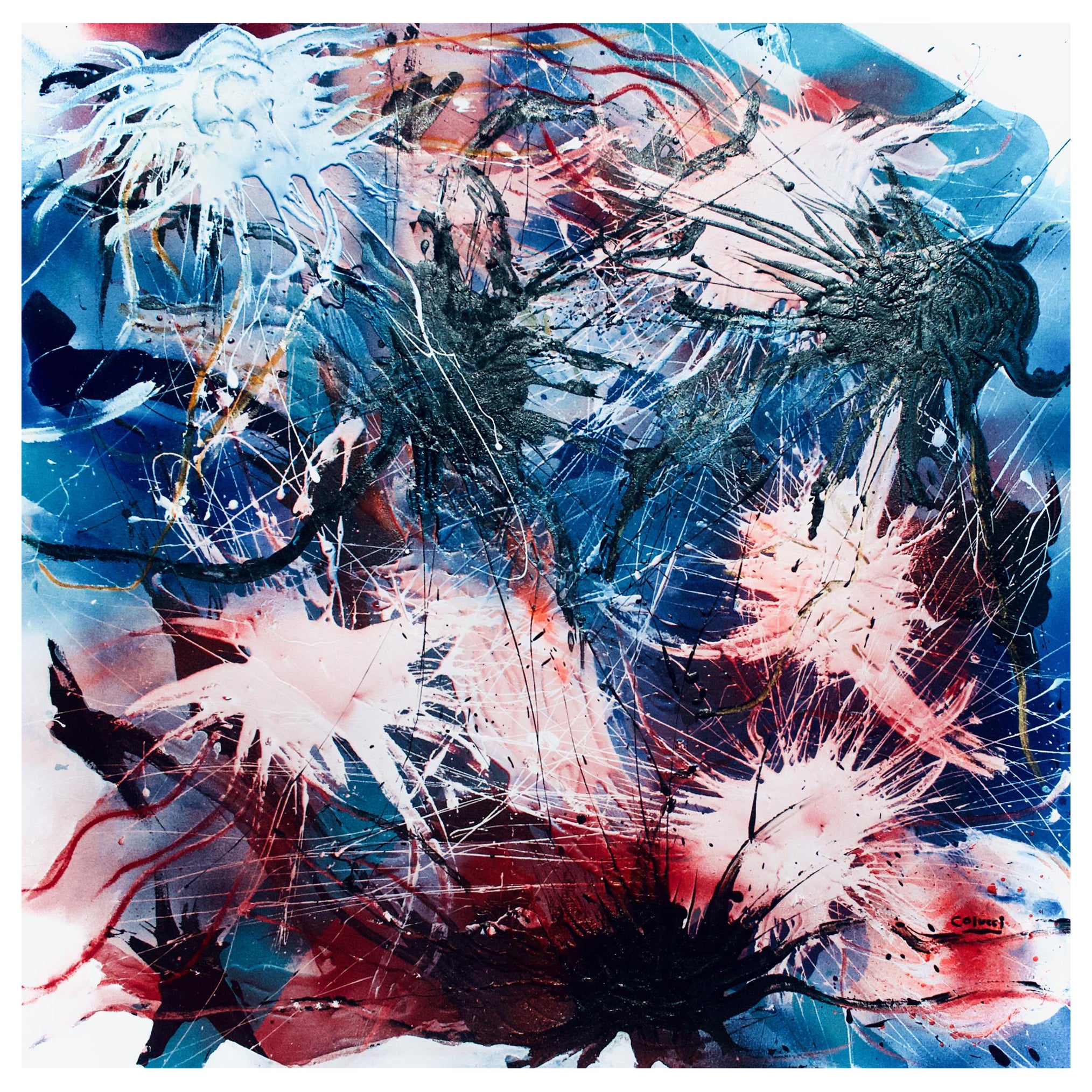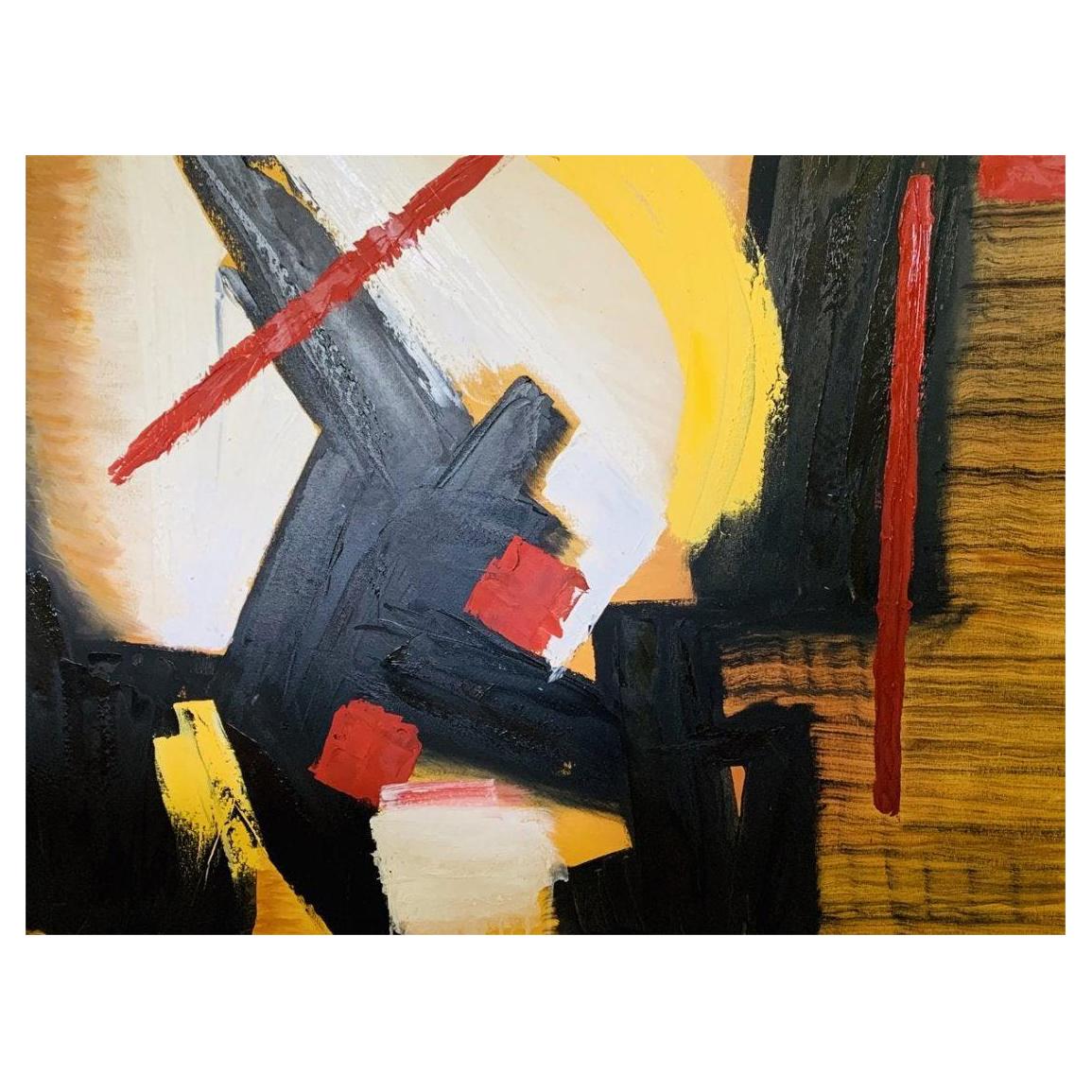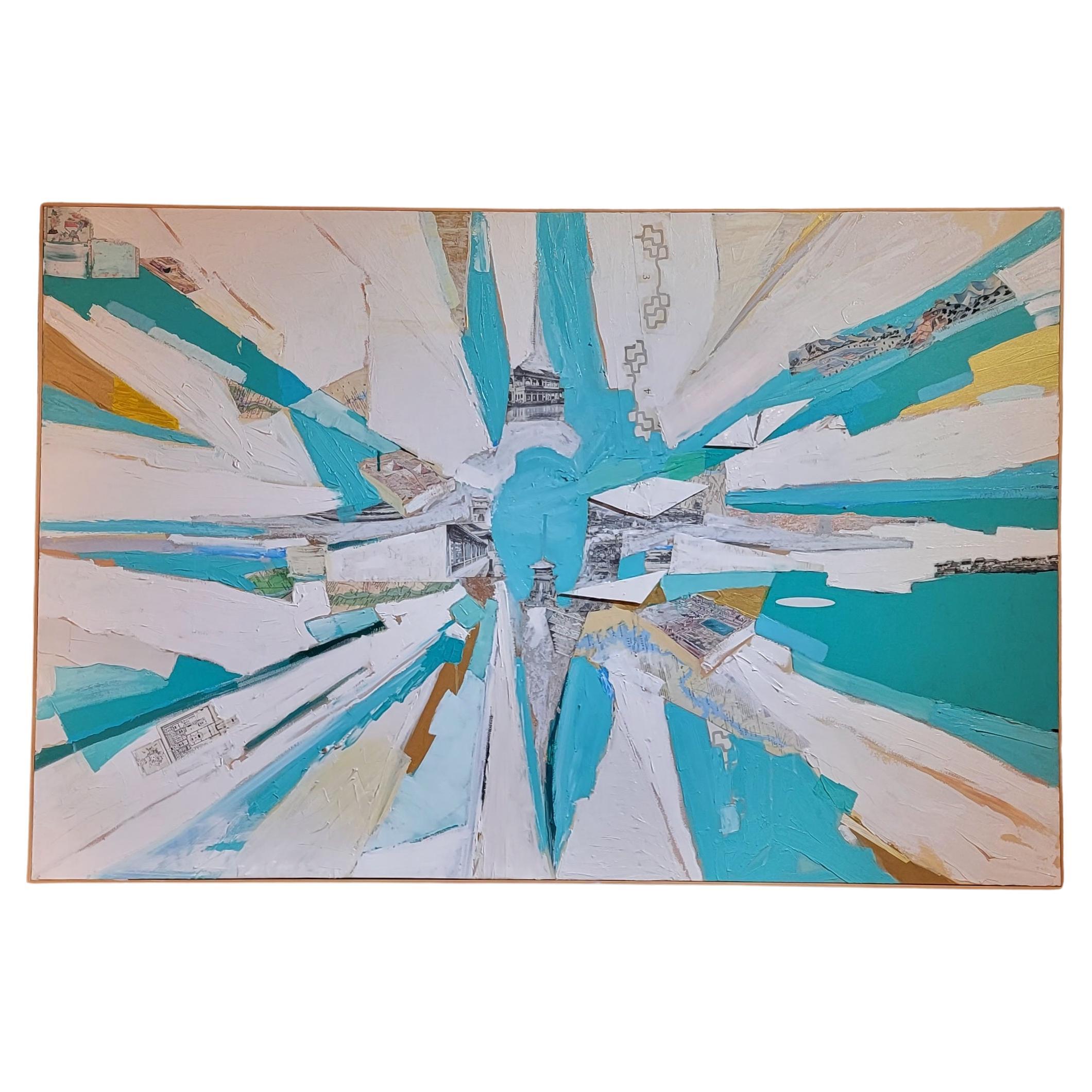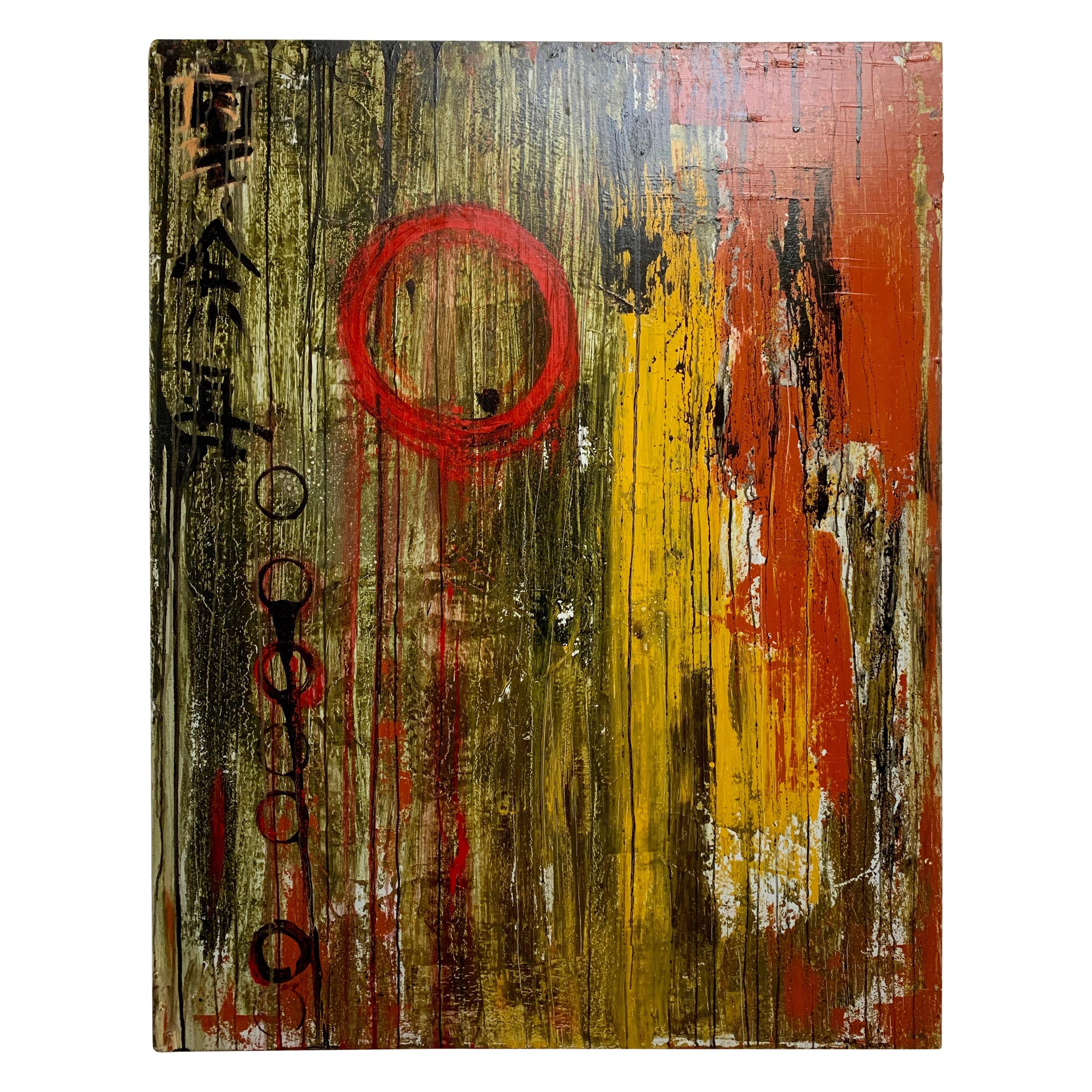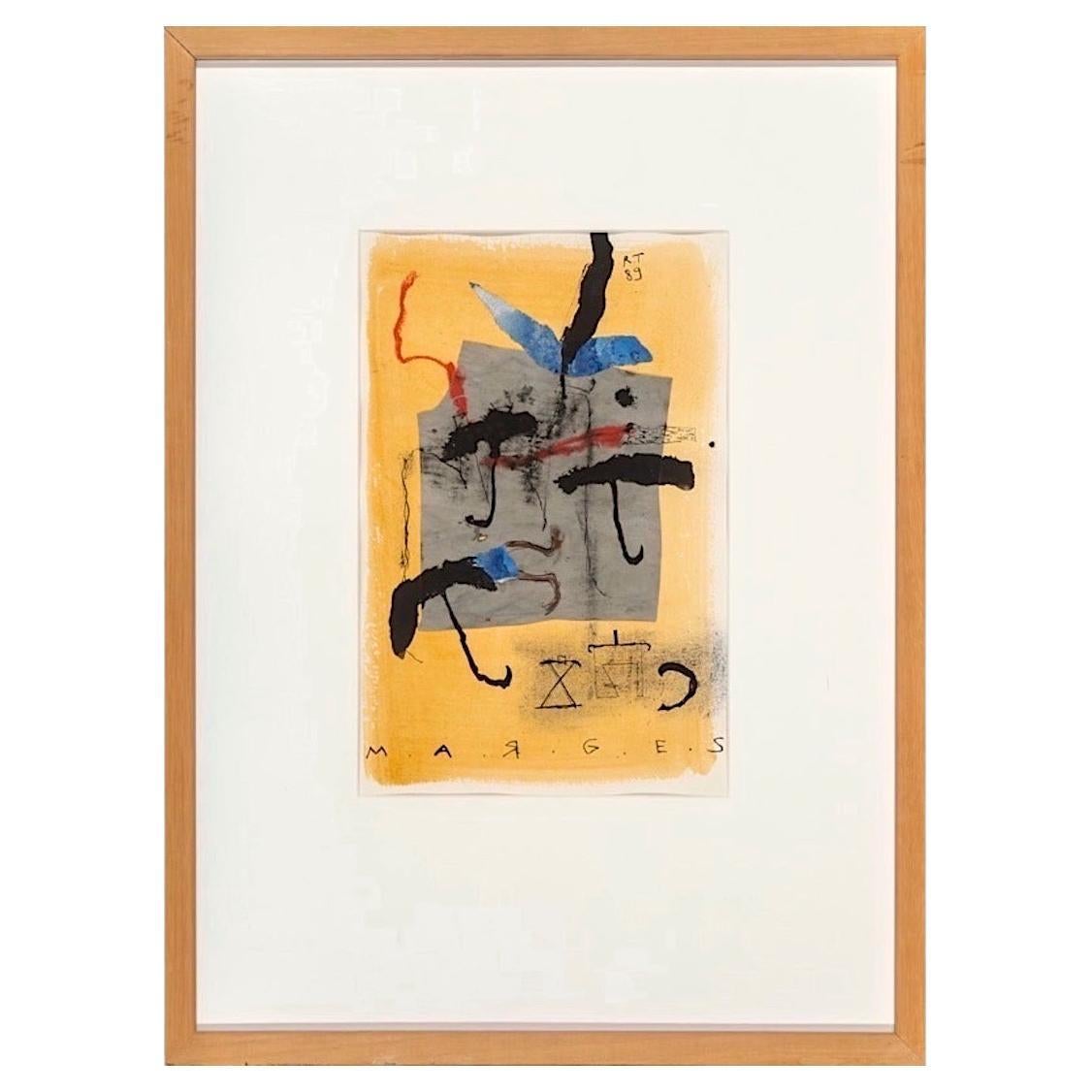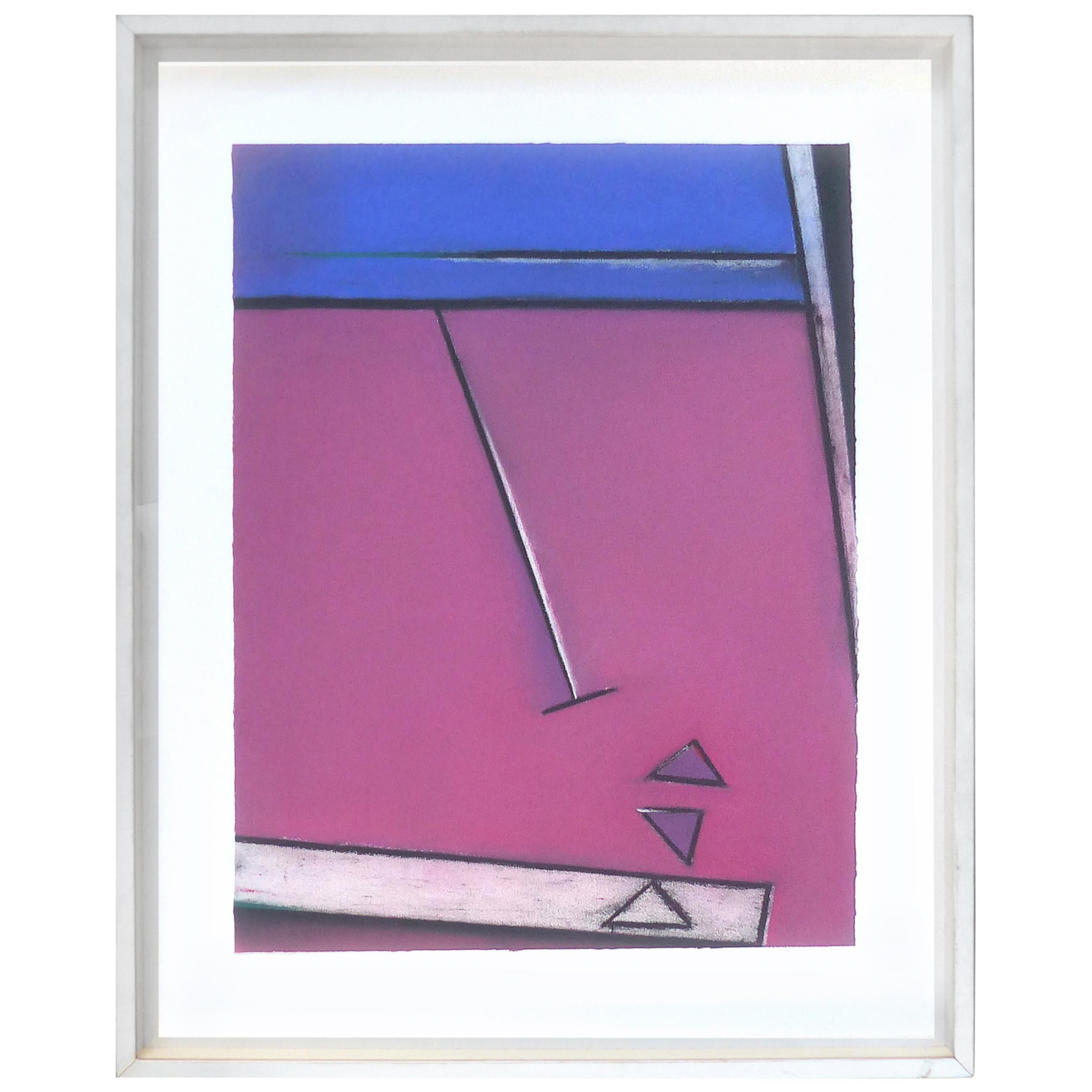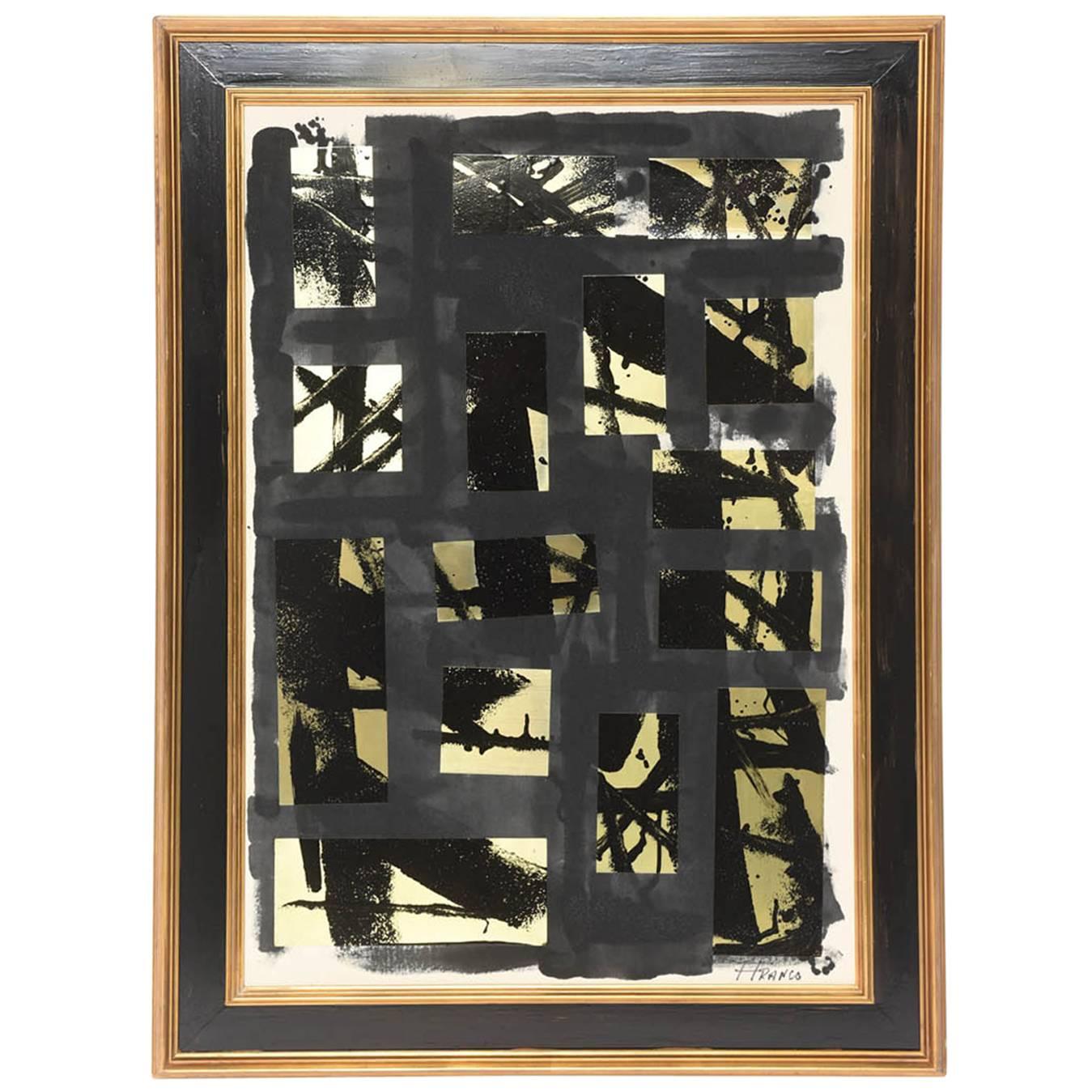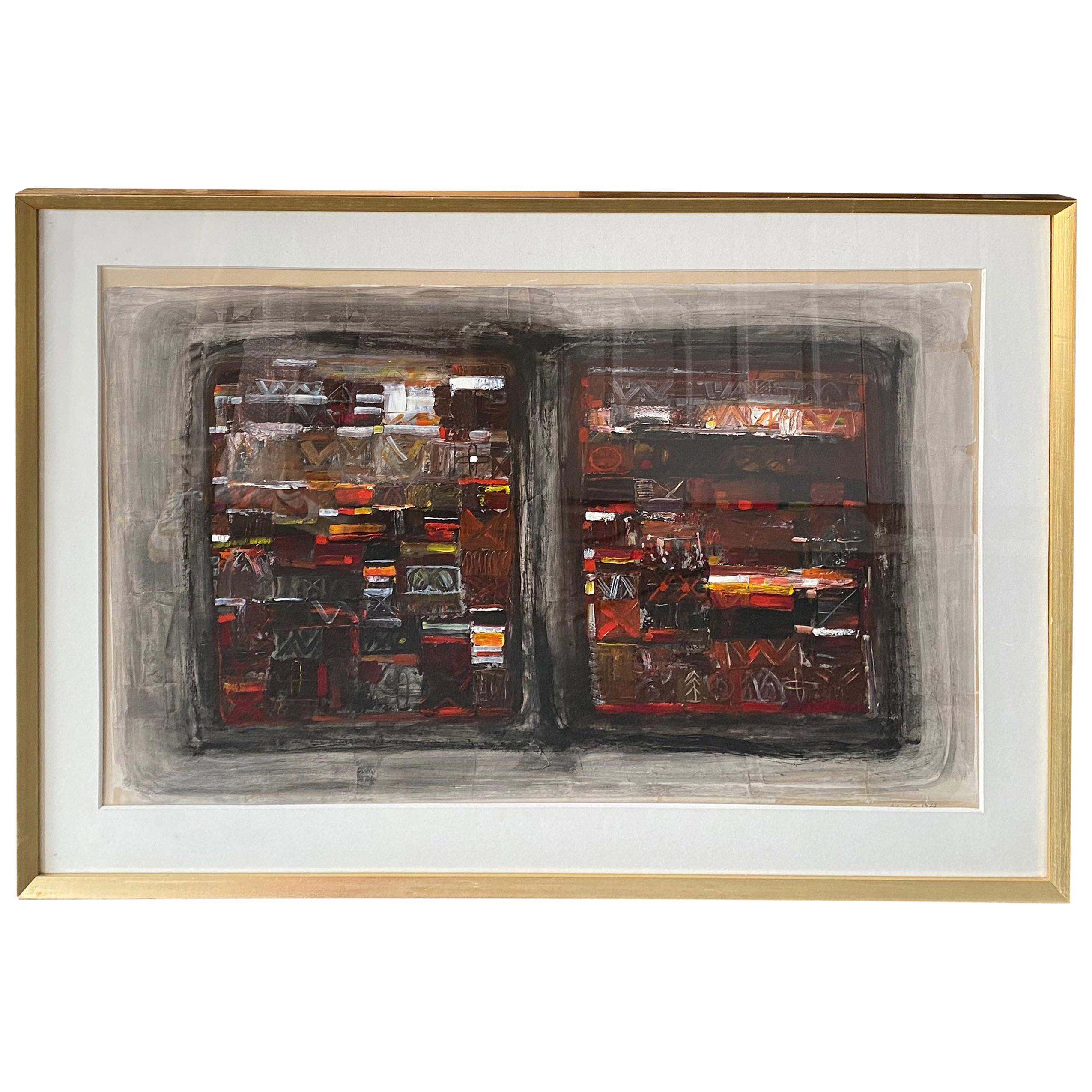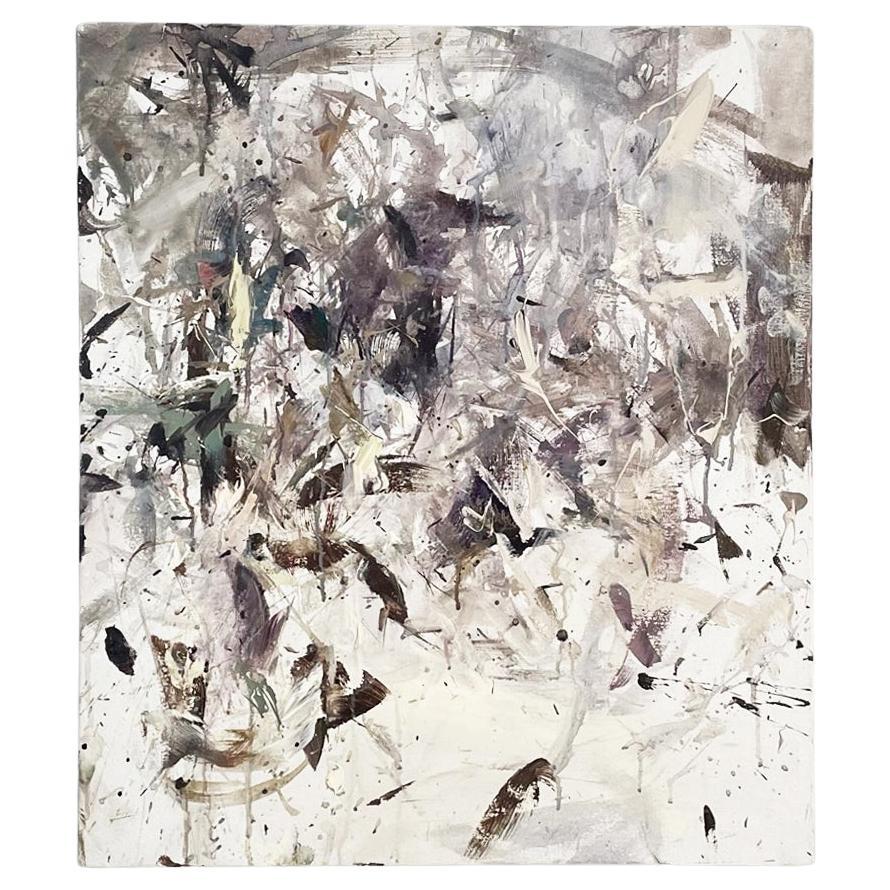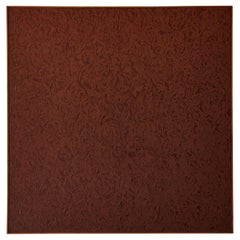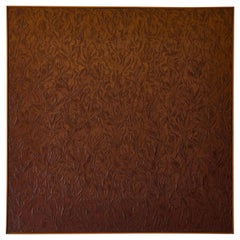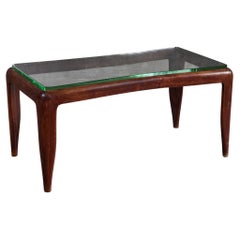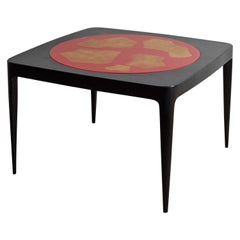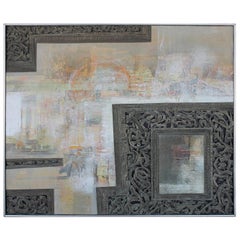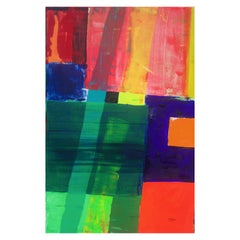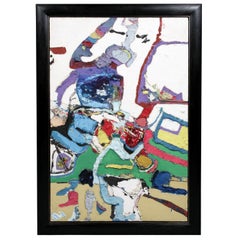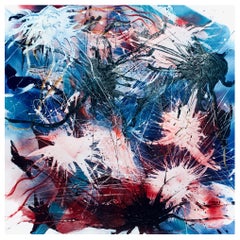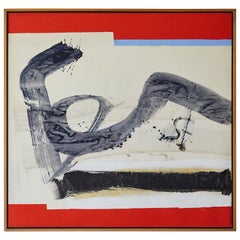
Mixed-Media Painting by Renee Ritter
View Similar Items
Want more images or videos?
Request additional images or videos from the seller
1 of 7
Mixed-Media Painting by Renee Ritter
About the Item
- Creator:Renee Ritter (Artist)
- Dimensions:Height: 41.7 in (105.92 cm)Width: 43.5 in (110.49 cm)Depth: 2 in (5.08 cm)
- Materials and Techniques:
- Place of Origin:
- Period:1980-1989
- Date of Manufacture:1982
- Condition:Wear consistent with age and use.
- Seller Location:Los Angeles, CA
- Reference Number:1stDibs: LU1194214849252
About the Seller
4.3
Vetted Professional Seller
Every seller passes strict standards for authenticity and reliability
Established in 2014
1stDibs seller since 2015
124 sales on 1stDibs
Typical response time: 1 hour
Authenticity Guarantee
In the unlikely event there’s an issue with an item’s authenticity, contact us within 1 year for a full refund. DetailsMoney-Back Guarantee
If your item is not as described, is damaged in transit, or does not arrive, contact us within 7 days for a full refund. Details24-Hour Cancellation
You have a 24-hour grace period in which to reconsider your purchase, with no questions asked.Vetted Professional Sellers
Our world-class sellers must adhere to strict standards for service and quality, maintaining the integrity of our listings.Price-Match Guarantee
If you find that a seller listed the same item for a lower price elsewhere, we’ll match it.Trusted Global Delivery
Our best-in-class carrier network provides specialized shipping options worldwide, including custom delivery.More From This Seller
View AllOil Painting by Sumatimohan
By Sumatimohan
Located in Los Angeles, CA
"Dev-Lok #12" by Sumatimohan with handmade frame by artist. Oil painting made in USA, circa 1980.
Sumatimohan was born in the village of Ghodiyal in India. His deeply spiritual w...
Category
Vintage 1980s American Paintings
Materials
Canvas, Wood, Paint
$19,500
Oil Painting by Sumatimohan
By Sumatimohan
Located in Los Angeles, CA
"Dev-Lok #5" by Sumatimohan with handmade frame by artist. Oil painting made in USA, circa 1980.
Sumatimohan was born in the village of Ghodiyal in India. His deeply spiritual wo...
Category
Vintage 1980s American Paintings
Materials
Canvas, Wood, Paint
$19,500
Cocktail Table by Gio Ponti
By Gio Ponti
Located in Los Angeles, CA
Low hourglass table by Gio Ponti with original green glass top. Made in Milan circa 1940s.
Includes a certificate of authenticity from the Gio Po...
Category
Vintage 1940s Italian Side Tables
Materials
Glass, Oak
$22,000
Coffee Table by Angelo Bragalini
By Angelo Bragalini
Located in Los Angeles, CA
Coffee table with back painted glass top signed A. Bragalini. Made in Bologna circa 1940s.
Category
Vintage 1940s Italian Coffee and Cocktail Tables
Materials
Glass, Wood
Unique Wall Console by Fontana Arte
By Fontana Arte
Located in Los Angeles, CA
Unique wall hanging chiseled glass shelf with brass and wood details by Fontana Arte. Made in Italy circa 1950s.
Category
Vintage 1950s Italian Shelves and Wall Cabinets
Materials
Brass
S 20 Leather Ottoman by Pierre Chapo
By Pierre Chapo
Located in Los Angeles, CA
S 20 leather ottoman/stool by Pierre Chapo. Made in France circa 1967.
Provenance:
Maison Gauthier by Jean Prouvé. Saint Dié 1962
Via Atelier Chapo Créations :
Same manufacture as the S15 armchair. The intelligence of the so-called "48×72" assembly system sees the introduction of a new generation of ingenious furniture from which the S 20 ottoman...
Category
Vintage 1960s French Stools
Materials
Leather, Elm
You May Also Like
Mixed-Media Painting by Don Clausen
By Don Clausen
Located in Palm Springs, CA
Mixed-media painting by Don Clausen (1930 - ), dated 1971. Painting is on wood. Don Clausen is/was active in California and is known for abstract expression. He uses a palette knife ...
Category
Vintage 1970s American Paintings
Materials
Wood
Mixed Media Painting by Steven Colucci
By John Byard
Located in New York City, NY
Steven Colucci’s iconoclastic approach to performance and the visual arts
have not only long blurred the boundaries between these disciplines, but have
challenged its most basic assumptions. The title of this show references a
most rudimentary dance move --the plié --and our assumptions of what to
expect in relation to this. Also the suggestion that we can simply press a
button and a preconceived outcome will be courteously delivered --a form of
prefabricated belief in itself. Steven Colucci’s artwork turns such basic
assumptions on their heads. Finding early inspiration in the New York school
of abstract expressionists such as Jackson Pollock with his action painting,
and then further by his professor --a then young Vito Acconci while studying
at the School of Visual Arts, Steven Colucci went from exploring the raw
existentialist experimentation of New York’s early painting and performance
scenes, to investigating the other end of the spectrum --the rigorously
measured and controlled disciplines of pantomime and ballet; studying in
Paris under the tutelage of world-famous Marcelle Marceau, and engaging
with the concepts of dramatic movement pioneer and intellectual Etienne
Decroux. Colucci has explained the difference between the extremes of
pantomime and dance as being that pantomime forces movement via an
internal capacity --movement directed inward to the core of one’s self --a
source requiring extreme mental and physical control. Dance by contrast is
an external expression; likewise requiring great precision, although instead
an extension of self or sentiment that projects outwardly. While such
historical ‘movement’ disciplines serve as foundation blocks for Steven’s
artistic explorations, it is the realm in between that he is best known for his
contributions --an experimental movement and performance art that
simultaneously honors, yet defiantly refutes tradition; rejecting a
compartmentalization regarding art and movement, yet incorporating its
elements into his own brand of experimental pastiche. Colucci’s performance
works manifest as eerily candy-coated and familiar, yet incorporate
unexpected jags of the uncanny throughout, exploiting a sort of coulrophobia
in the viewer; an exploration of a cumulative artifice that binds human
nature against its darker tendencies; highlighting traditions of artifice itself -
the fabricated systemologies that necessitate compartmentalization in the
first place.
It is evident in Steven Colucci’s paintings that he has established a uniquely
distinctive pictorial vocabulary; a strong allusion to --or moreso an extension
of --his performance works. Colucci’s paintings depict a sort of kinetic
spectrum, or as he refers to them “a technical expression of physicality and
movement”. Whereas the French performance and visual artist Yves Klein
used the human body as a “paint brush” to demarcate his paintings and
thereby signify a residue of performance, Colucci’s utilization of nonsensical
numbers and number sequences taken from dance scores, as well as heat-
induced image abstraction depicting traces of movement likewise inform his
vocabulary. In the strand of the choreographed, yet incorporating moments of
chance, Colucci’s paintings represent an over arching structure; a rhythm of
being and state, yet detail erratic moments --moments that denote a certain
frailty --the edge of human stamina. Colucci’s paintings dually represent a
form of gestural abstraction --and also the reverse of this --a unique
anthropomorphization of varying states of movement – that sometimes
present as a temperature induced color field, at others are juxtapositions of
movement and depictions of physical gestural images themselves. Colucci’s
use of vernacular and found materials such as cardboard evoke his mastery of
set design, and also reference a sort of collective experience of urbanity and
the ephemeral. Such contradictions seem to permeate not only Steven
Colucci’s artwork, but also are reflected in his person – one who grew up in
New York’s Bronx during a zeitgeist moment in visual and performing arts in
the 1960s – one who shifts with ease from happenings and experiments in
New York City, to his meticulously choreographed megaproductions at
Lincoln Center or starring in the Paris ballet...
Category
2010s Paintings
Materials
Acrylic
Mixed-Media Painting by Louis Schiavo
By Louis Schiavo
Located in London, GB
Mixed-media on board on gesso ground, in gouache and oil using the impasto technique.
The work also includes areas of collage using applied materials beneath the paint to add depth ...
Category
Vintage 1950s Corsican Mid-Century Modern Paintings
Materials
Canvas
Mixed Media Painting by Steven Colucci
By Jackson Pollock
Located in New York City, NY
Steven Colucci’s iconoclastic approach to performance and the visual arts
have not only long blurred the boundaries between these disciplines, but have
challenged its most basic assumptions. The title of this show references a
most rudimentary dance move --the plié --and our assumptions of what to
expect in relation to this. Also the suggestion that we can simply press a
button and a preconceived outcome will be courteously delivered --a form of
prefabricated belief in itself. Steven Colucci’s artwork turns such basic
assumptions on their heads. Finding early inspiration in the New York school
of abstract expressionists such as Jackson Pollock with his action painting,
and then further by his professor --a then young Vito Acconci while studying
at the School of Visual Arts, Steven Colucci went from exploring the raw
existentialist experimentation of New York’s early painting and performance
scenes, to investigating the other end of the spectrum --the rigorously
measured and controlled disciplines of pantomime and ballet; studying in
Paris under the tutelage of world-famous Marcelle Marceau, and engaging
with the concepts of dramatic movement pioneer and intellectual Etienne
Decroux. Colucci has explained the difference between the extremes of
pantomime and dance as being that pantomime forces movement via an
internal capacity --movement directed inward to the core of one’s self --a
source requiring extreme mental and physical control. Dance by contrast is
an external expression; likewise requiring great precision, although instead
an extension of self or sentiment that projects outwardly. While such
historical ‘movement’ disciplines serve as foundation blocks for Steven’s
artistic explorations, it is the realm in between that he is best known for his
contributions --an experimental movement and performance art that
simultaneously honors, yet defiantly refutes tradition; rejecting a
compartmentalization regarding art and movement, yet incorporating its
elements into his own brand of experimental pastiche. Colucci’s performance
works manifest as eerily candy-coated and familiar, yet incorporate
unexpected jags of the uncanny throughout, exploiting a sort of coulrophobia
in the viewer; an exploration of a cumulative artifice that binds human
nature against its darker tendencies; highlighting traditions of artifice itself -
the fabricated systemologies that necessitate compartmentalization in the
first place.
It is evident in Steven Colucci’s paintings that he has established a uniquely
distinctive pictorial vocabulary; a strong allusion to --or moreso an extension
of --his performance works. Colucci’s paintings depict a sort of kinetic
spectrum, or as he refers to them “a technical expression of physicality and
movement”. Whereas the French performance and visual artist Yves Klein
used the human body as a “paint brush” to demarcate his paintings and
thereby signify a residue of performance, Colucci’s utilization of nonsensical
numbers and number sequences taken from dance scores, as well as heat-
induced image abstraction depicting traces of movement likewise inform his
vocabulary. In the strand of the choreographed, yet incorporating moments of
chance, Colucci’s paintings represent an over arching structure; a rhythm of
being and state, yet detail erratic moments --moments that denote a certain
frailty --the edge of human stamina. Colucci’s paintings dually represent a
form of gestural abstraction --and also the reverse of this --a unique
anthropomorphization of varying states of movement – that sometimes
present as a temperature induced color field, at others are juxtapositions of
movement and depictions of physical gestural images themselves. Colucci’s
use of vernacular and found materials such as cardboard evoke his mastery of
set design, and also reference a sort of collective experience of urbanity and
the ephemeral. Such contradictions seem to permeate not only Steven
Colucci’s artwork, but also are reflected in his person – one who grew up in
New York’s Bronx during a zeitgeist moment in visual and performing arts in
the 1960s – one who shifts with ease from happenings and experiments in
New York City, to his meticulously choreographed megaproductions at
Lincoln Center or starring in the Paris ballet...
Category
2010s Paintings
Materials
Acrylic
Large Mixed Media Painting by Tricia Strickfaden
Located in Los Angeles, CA
Introducing the striking "Large Mixed Media Painting" by renowned artist Tricia Strickfaden - a captivating piece that effortlessly blends modern artistry with timeless elegance. Thi...
Category
21st Century and Contemporary American Modern Paintings
Materials
Canvas, Acrylic
Abstract Mixed Media Painting by Michael Costantini
Located in Fulton, CA
Large-Scale mixed media abstract painting by Michael Costantini. Titled "Confluence of Architecture". Signed and dated 2015 Verso. Original wood frame.
Category
21st Century and Contemporary American Brutalist Paintings
Materials
Canvas, Paint
